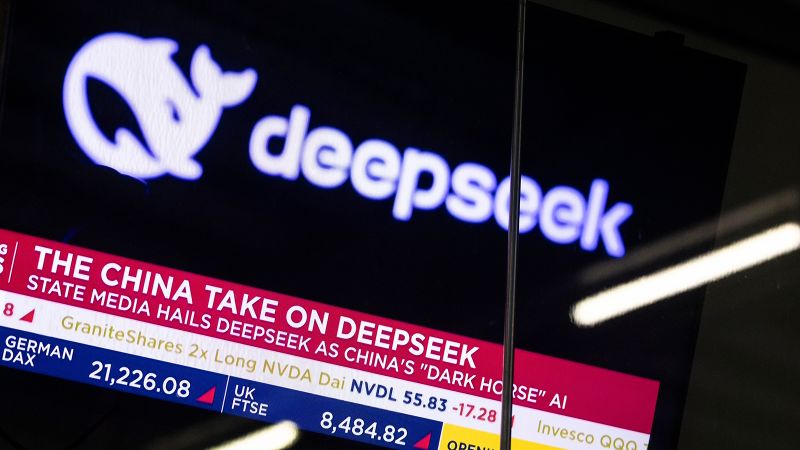The artificial intelligence landscape is witnessing seismic shifts, particularly with the emergence of DeepSeek, a previously obscure Chinese startup that has developed a competitive model capable of challenging some of the leading AI technologies developed by American companies like OpenAI and Google. The swift ascent of DeepSeek has thrown a spotlight on the vulnerability of America’s once seemingly unassailable position in the AI sector, upending long-held beliefs that significant financial resources and unfettered access to advanced computer chips are prerequisites for meaningful AI advancements.
President Donald Trump now faces a critical decision regarding the implications of DeepSeek’s success. For years, the United States has implemented stringent measures aimed at limiting China’s access to essential technologies, particularly the high-performance computer chips crucial for training AI models. These export controls have been designed with the intent to hinder Chinese tech companies from advancing their AI capabilities, thus maintaining American leadership.
However, the relative success of DeepSeek’s R1 model, which the company claims to have developed with far fewer resources and on fewer advanced chips than its American counterparts, raises questions about the effectiveness of these controls. Some analysts posit that the export sanctions may have inadvertently accelerated China’s AI development by compelling its companies to innovate and create workarounds in response to restrictions. John Villasenor, a professor of engineering and law at UCLA, noted that the export controls might actually spur advancements in Chinese AI, rather than stifle them.
This perspective presents a significant challenge to the policies established under both the previous Trump administration and the current Biden administration, casting doubt on their efficacy. AI expert Gary Marcus articulates a similar view in a recent post, suggesting that the unintended consequences of these sanctions could bolster China’s technological capabilities rather than undermine them.
The contrasting interpretations of DeepSeek’s achievements have sparked intense debate about the future trajectory of AI, particularly concerning the ongoing tech arms race between the United States and China. While some believe that increasing pressures on China from the U.S. could lead to a collapse of its AI endeavors, others argue that the efficacy of DeepSeek remains uncertain. Skeptics highlight the possibility that the company’s accomplishments could stem from hoarding chips before the enforcement of export controls or from illicitly acquiring semiconductors on the black market.
Jeffrey Sonnenfeld, a senior associate dean at the Yale School of Management, draws a parallel between DeepSeek’s situation and the historic space race, dubbing it either a “Sputnik Moment” — an indication of a genuine breakthrough — or a “Potemkin Moment,” suggesting a façade of progress that may not hold up under scrutiny. Furthermore, questions raised about the legitimacy of DeepSeek’s claims underscore a broader skepticism about the authenticity of China’s technological advancements.
The scrutiny doesn’t end with individual innovators; broader market implications are evident. Art Hogan, chief market strategist at B. Riley Wealth Management, urges continued skepticism toward the success claims of DeepSeek, advocating for stronger verification measures regarding technological breakthroughs reported by Chinese firms. This need for vigilance extends to the enforcement of export controls, which analysts suggest has been inconsistent and rife with loopholes, allowing avenues for circumvention.
National Security Adviser Jake Sullivan acknowledged the iterative nature of export control policies, emphasizing the need for continual adaptation as both adversaries learn from each other’s strategies. Sullivan pointedly remarked on China’s attempts to mitigate the impact of export controls through aggressive campaigns asserting the inevitability of its AI ambitions, suggesting a proactive stance in the face of global competition.
Ultimately, the stakes in this evolving contest for AI supremacy are monumental. DeepSeek’s ascendance serves as a potent reminder of the complexities and unpredictabilities of the technological race between the United States and China. What once appeared as a manageable competition now reveals itself to be an intricate landscape where traditional strategies may not always yield the desired outcomes, illustrating the nuanced interplay between regulation, innovation, and geopolitical strategy on the global stage.



